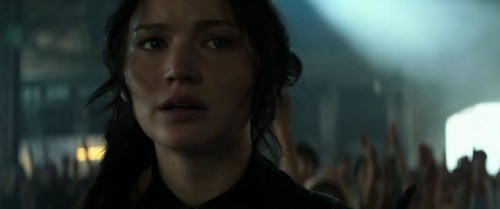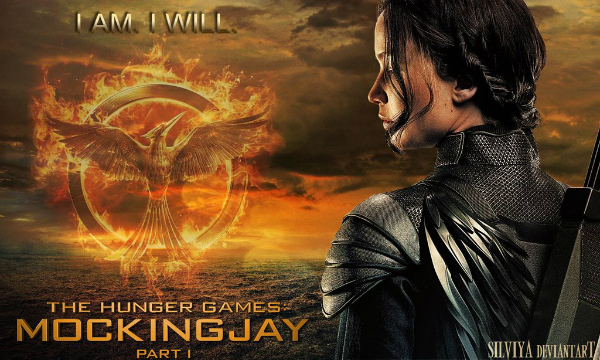Terminator Genisys: Not My Sarah Connor by Liz LaBrocca
Sarah meets Reese (Jai Courtney) knowing that she will need to have sex with this man, regardless of how she feels, to save the human race. It’s an awkward problem that’s dealt with in Schwarzenegger one-liners about mating and a weak attempt at a narrative theme of free will versus destiny.
Failed Revolutions in Imaginary Cities by Olga Tchepikova
How do you solve a problem like dystopian science fiction? It’s been around for about as long as the film industry and yet, politics and society still won’t stop producing warning signs for the decay of humanity, providing directors, writers, and “artists” with almost inexhaustible opportunities for critiquing the current state of the world community, or showing what the present state of things might turn into if not handled consciously and carefully.
Killing Time: The Luxury of Denial in Dawn of the Dead by Jennifer Krukowski
While the men are shopping, Francine is left alone to fend off a zombie with no means of self-defence. As she attempts to escape onto the roof, the others return to save her from the zombie and bring her back inside. She is dismayed to realize that they intend to stay there indefinitely. While the men enthusiastically describe the mall as a “kingdom” and a “goldmine,” Francine describes it as a “prison.”
Advantageous: Feminist Science Fiction At Its Best by Holly Derr
Though this happens in a future in which cosmetic surgery has become much more than a matter of lift and tuck, Koh’s struggle with whether and how to change her body for the sake of her daughter and her career, combined with the behind-the-scenes machinations of the corporation, casts a complicated light on the present struggles of women trying to succeed in both career and motherhood while facing the social pressure to stay young and be perfect.
Death and Dating: Love, Hope, and Millenials in Warm Bodies by Emily Katseanes
R and Julie have opted out of the capitalist conveyor belt that turns humans into braindead zombies and or war-mongering huddled masses. While it could also be read as a fundamental laziness to even stand up for themselves, the two succeed by not fighting.
Learn from the Future: Battle Royale by Belle Artiquez
And just as the film articulates these contrasting attitudes and dilemmas with regard to controlling powers and zero sum attitudes, so too does it address these issues within themes of gender, sexuality and authority.
Can a Dystopian Society Be Redeemed? Lessons from Mad Max: Fury Road by Gabrielle Amato
And, although The Citadel is ruled by powerful men with disabilities, we understand it to be a fundamentally ableist society. Immortan Joe is questing for a “perfect” son and has clearly chosen The Wives for their beautiful, unblemished, able bodies in an attempt to breed one. We understand that this is a patriarchy in its most extreme form where women have no personhood at all.
Advantageous: The Future Is Now by Leigh Kolb
“Are women really going backwards going forward?”
Mockingjay — Part One: On YA Dystopias, Trauma, and the Smokescreen of the “Serious Movie” by Charlotte Orzel
Though we get a sense of District Thirteen’s manipulations in the novel, Katniss savvily negotiates with them, resists their orders, and remains distrustful of their motivations, in contrast to her comparatively slight unease in the film. While these changes leave most of the major plot elements intact, they undermine our sense of Katniss as an intelligent political actor who is connected to and moved by the revolution itself, rather than just her personal stake in the events.
Reflecting on True Detective‘s First Season by Lisa Shininger
But, at the end of the day—at the end of a lot of days—I’m tired of watching these shows and seeing women as props and symbols used to push the hero along his way. I’m tired of watching these shows and seeing the massive chasms between what they present, what they claim to represent, and what their fans insist they represent.
The Margins of Dystopia: Darren Aronofsky’s Noah by Rebecca Willoughby
It certainly isn’t a feminist world she lives in, but she does her level best to undermine her husband in an enclosed space. As Noah himself veers away from his family tradition of life-supporting environmental husbandry, Naameh continues to practice what he (used to) preach, preserving her daughter-in-law, the animals, and the land once they find it again.
The Burden of Carrying On: The Currency of Women in Dystopian Films by BJ Colangelo
I can’t keep count of the number of times the fact that women menstruate has been used as a reason to render us incapable of doing something. However, the fact women can have children (while cis-men cannot) is arguably our greatest power in a time of crisis.
When Skies Fall, Bodies Fail: Gender and Performativity on a Dystopian Earth by Sean Weaver
In rejecting Lexi, Anne perpetuates the false solidarity and universal acceptance Butler points out in the above passage. Anne sees Lexi as failing to perform the necessary gender of her body. Lexi is the very symbol of a failed body, the failed universal woman Anne has expected of her daughter.
Totally Radical Girls and the Bitchin’ Burden of Civilization by ThoughtPusher
I mean, she doesn’t wrap her arms around some guy’s waist to hold on for the ride of her life or even jump onto a Vespa or something weak. Nope, she’s a zombie-fightin’ shoulder-padded biker who escapes danger on her own and looks just as feathery-haired good when she gets to her destination as when she put down her attacker in the alley (although this was the early 80s while CFCs were being phased out, so big hair treated with a half-bottle of AquaNet always had some hold).
Dystopia Within Neon Genesis Evangelion by CG
What helps ‘Evangelion’ continue to grow its popularity is not the focus on religious or sci-fi elements, but its commitment to showcasing the fragility of humanity through its flawed and destructive characters tasked with saving the world and themselves. And how does the franchise show this? By literally placing the future of what’s left of the world in the hand of dysfunctional and emotionally fragile children.
Manic Pixie Revolutionary Awakenings by Julia Patt
Maria essentially makes Freder the chosen one—she inspires him to go underground and gives him his purpose when he awakens to the dystopian system in which he lives. Without her, the story does not proceed and the system continues unopposed.
Hell Is a Future We Make for Ourselves: The Many Dystopias of The 100 by Deborah Pless
As she has an older brother, her birth was unauthorized and when she was discovered she was sent directly to the SkyBox. And so on. While some of the crimes are legitimate, many are the result of children growing up in a totalitarian state. So clearly it’s going to be better here on the ground, right?
Ha!
The Hunger Games: Proving Dystopia Is the Best Young Adult Genre by Rowan Ellis
Dystopia, in its futuristic escapism and its contemporary relevance, is an ideal genre for the young adult demographic. By pushing the boundaries of disturbing content and reflecting on youthful idealism, dystopian narratives trust the YA consumer to be both literary in their consumption of the book or film, but also socially and morally insightful in their view of the imagined world they hold.
“You’re Not My Mother!” Bodies, Love, and Survival in Advantageous by Colleen Martell
In these moments, and in those unspoken moments when she savors placing long sweet kisses on Jules’s cheek, we see Gwen’s resistance. “Know your value,” Gwen tells Jules. It’s not found in good grades, not in getting into the best school, not in a newer and “better” body, but in sensory and emotional human pleasures.
The Making of a Caribbean-Canadian Sci-Fi: Brown Girl in the Ring by Amanda Parris
When speaking over the phone, Sharon’s enthusiasm for this pioneering adaptation of a Caribbean Canadian sci-fi novel emanates as though this was a fresh and newly discovered idea. In fact, Sharon has been working on creating this film for the past 15 years (while also establishing herself as a published playwright, writer, actor and award winning director) and although the journey has been long, she strongly believes that now is the perfect time to transition this well-nurtured idea into tangible reality.
Empowerment in the Imaginary Spaces of Zach Snyder’s Sucker Punch by Toni McIntyre
By creating her own worlds where she is a force to be reckoned with, Babydoll reclaims that very thing that was taken away from her by her stepfather and the hospital: her humanity.


































